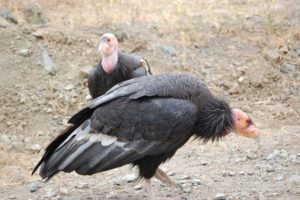Birds in the environment are at great risk around the world. The main threats to bird species extinction are human activities, overhunting, deforestation, pollution, and transformations of the earth’s landscape. Nearly 13% of all birds on the planet are on the brink of extinction.
Because of their small numbers, some birds are considered rare. In 2022, about 40 bird species are classified as endangered and at risk.
Top of the rarest and most endangered birds on the planet
In total, ornithologists know about 10.5 thousand species of birds. But some of them are so rare and few that almost nothing is known about them, and others, which once densely populated their habitats, are now on the verge of extinction.
Sumatran Ground Cuckoo

The Sumatran ground cuckoo is a rather large ground bird that inhabits the jungles of southern Sumatra. It was discovered in 1879, but the rare shy bird has never been studied. Only rarely did it meet researchers and caught in the lens of automatic hidden cameras. In 2007 it was possible to record its cry. That is, in fact, all that scientists know about the ground cuckoo.
The number of these birds is about 250.
Bearded little bustard (Bengal bustard)

The great bustard’s once vast range in India, Cambodia, and Nepal is now reduced to isolated islets. Like other bustards, it can fly but prefers to simply run.
Scientists estimate that there are about 500 of these birds left.
Giant Ibis

The largest members of the ibis family, reaching 1 m in length. They live mostly in northern Cambodia, where they are one of the national symbols.
The number of giant ibis is less than 500 birds.
California condor.

A large bird, with an impressive wingspan of up to 3 meters and weighing about 15 kg. They were once widespread in the western United States. Condors are long-livers, living up to 60 years. By 1981 there were only 21 of them.
Currently, there are just over 400 condors, but half of them are kept in captivity.
Wood owl

A poorly studied bird native to central India. The wood owl lives in the thick of forests and feeds on invertebrates, lizards, and rodents. Many other details of its life remain unknown.
The number of owls is estimated at 250.
Cacapo, or owl parrot

The kakapo is a New Zealand flightless bird in the parrot family. It lives in burrows and is active at night, weighing about 6 kg. In the XIX century, the cockapo became so rare that all collectors wanted to get at least one specimen before the bird completely disappeared. Today there is a program for their preservation in nature reserves. In 2009 their number exceeded 100 for the first time.
Altogether there are 126 birds in the world.
Philippine Eagle (Harpy the Monkey eagle)

The large beautiful eagle has been the national symbol of the Philippines since 1995. It can indeed hunt macaws, but usually feeds on smaller mammals and birds. The harpy monkey-eagles were discovered in 1894 and have always been considered small in number, in addition, they reproduce very slowly.
Today, there are no more than 100 of them.
The Novocaledon owl goat-eater (black-backed owl frog)

So little is known about it that the bird is sometimes called the mystery goat-eater. They can be found only on New Caledonia Island. During all that time ornithologists have come across only two specimens, and that was in the distant 1880s and 1915. The last time the bird was seen in the wild was in the 1990s.
According to scientists the number of owls does not exceed 50 individuals.
Pink Pigeon

The Pink Pigeon is native to Mauritius and is on the verge of extinction. The species has been saved only through aviary breeding and keeping in the Jersey Zoo, where their population has increased to 100 individuals. There are about 20 pink birds left in the wild.
Screech Eagle

One of the rarest falconers was common in Madagascar 100 years ago, but by the early 1980s, the eagles’ range had shrunk to a small island on the island’s west coast.
The number of screech-eagles is about 10 pairs.

No responses yet